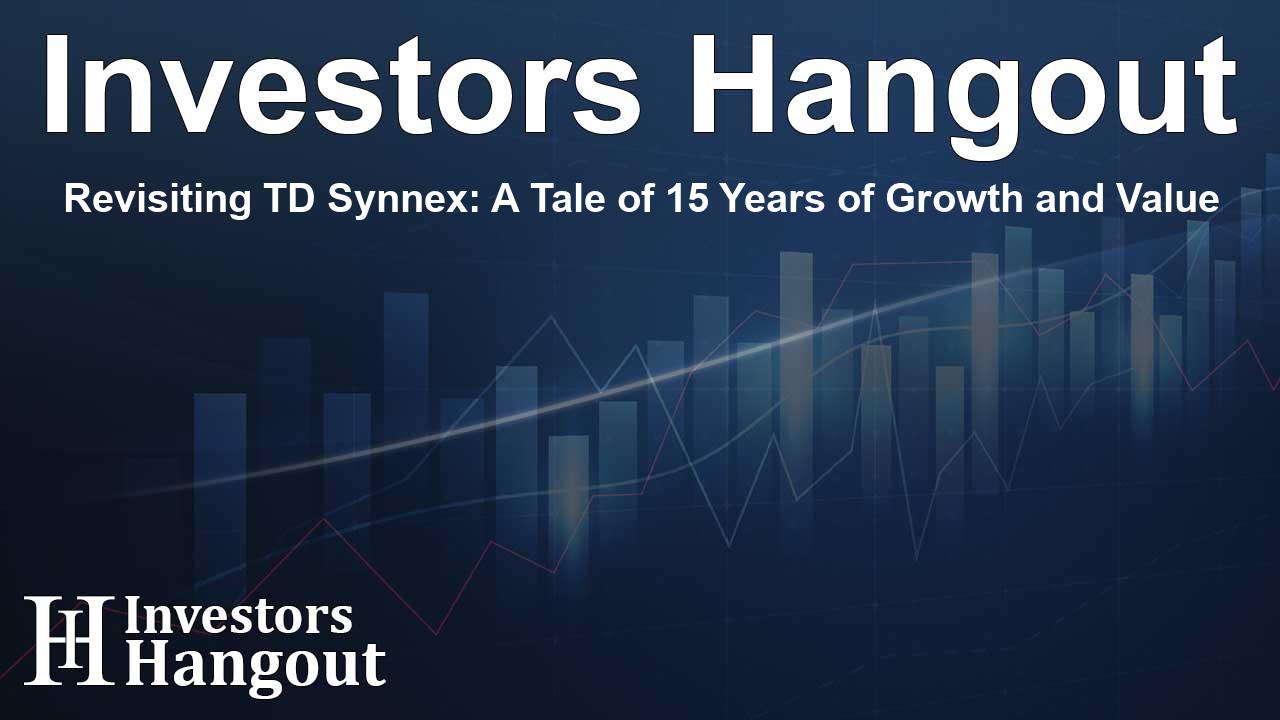Revisiting TD Synnex: A Tale of 15 Years of Growth and Value

Understanding TD Synnex's Investment Growth
TD Synnex (NYSE: SNX) has been a noteworthy player in its sector, consistently outperforming the market over a span of 15 years. With an impressive annualized return of 17.4%, the company has demonstrated its value to investors.
Investment Dynamics Over 15 Years
If an investor had taken the leap and invested $1000 in TD Synnex stock a decade and a half ago, that initial investment would be worth an astounding $11,044.79 today. This remarkable growth highlights the profound impact of compounded returns in the world of investing. The stock price currently stands at approximately $144.39, illustrating the rapid appreciation it has experienced.
Evaluating TD Synnex's Market Position
With a market capitalization now reaching $11.83 billion, TD Synnex has positioned itself as a robust entity. Its growth trajectory reflects not only favorable market conditions but also the strength of its business model and operational efficiency.
The Power of Compounding Returns
One of the critical takeaways from examining TD Synnex's history is the significance of compounded returns. This concept emphasizes how reinvested dividends and interest can lead to exponential growth over time, fundamentally altering an investor's financial landscape. By understanding this principle, investors can appreciate the transformative potential of long-term investments.
Current Market Trends and Future Outlook
Today, the landscape for tech and distribution services is evolving rapidly. TD Synnex continues to adapt, leveraging new technologies and innovations to stay ahead. As the demand for IT solutions skyrockets, the company is well-positioned to capitalize on these trends, further enhancing its potential for growth.
Conclusion: The Long-Term Investment Strategy
Investing in stocks like TD Synnex isn't merely about immediate returns; it’s about preparing for the future. With the right strategy, long-term investments can yield life-changing returns, as evidenced by the performance of TD Synnex over the last 15 years. Investors are encouraged to consider such opportunities that embrace the power of time and compounding.
Frequently Asked Questions
1. What is TD Synnex's stock ticker symbol?
TD Synnex is traded under the ticker symbol SNX.
2. How has TD Synnex performed over the past 15 years?
Over the last 15 years, TD Synnex has outperformed the market, delivering an average annual return of 17.4%.
3. How much would a $1000 investment be worth today?
A $1000 investment in TD Synnex would be worth approximately $11,044.79 today.
4. What factors contribute to TD Synnex's growth?
Factors such as market demand for IT solutions, operational efficiency, and strategic investments have driven TD Synnex’s growth.
5. Why are compounded returns important?
Compounded returns are crucial as they enable investments to grow exponentially over time, significantly enhancing wealth accumulation.
About The Author
Contact Kelly Martin privately here. Or send an email with ATTN: Kelly Martin as the subject to contact@investorshangout.com.
About Investors Hangout
Investors Hangout is a leading online stock forum for financial discussion and learning, offering a wide range of free tools and resources. It draws in traders of all levels, who exchange market knowledge, investigate trading tactics, and keep an eye on industry developments in real time. Featuring financial articles, stock message boards, quotes, charts, company profiles, and live news updates. Through cooperative learning and a wealth of informational resources, it helps users from novices creating their first portfolios to experts honing their techniques. Join Investors Hangout today: https://investorshangout.com/
The content of this article is based on factual, publicly available information and does not represent legal, financial, or investment advice. Investors Hangout does not offer financial advice, and the author is not a licensed financial advisor. Consult a qualified advisor before making any financial or investment decisions based on this article. This article should not be considered advice to purchase, sell, or hold any securities or other investments. If any of the material provided here is inaccurate, please contact us for corrections.
